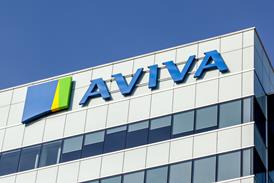In the latest edition of Informed Comment, the Pensions Management Institute's Tim Middleton discusses proposed changes to the auto-enrolment threshold.
The original concept was to include those with annual earnings in excess of the lower earnings threshold. This figure, currently £5,772 a year, corresponds to the lower earnings limit for National Insurance.
The Department for Work and Pensions has estimated there are currently 3.5m employees with earnings between the LEL and BPA. This is a significant increase on the 0.6m of just three years ago
One of the reforms introduced by the Pensions Act 2011 was the earnings trigger for auto-enrolment. This was set at the limit of the basic personal allowance for income tax, which at the time of its introduction in 2011-12 was £7,475 a year.
The stated intention of this change was “reduce the number of individuals who are automatically enrolled by up to 0.6m”. The concern was that for these 0.6m low earners, defined contribution pension accrual was inappropriate.
The argument was that for such individuals, the replacement ratio provided by the state pension benefits was adequate, pension contributions were too great a burden and the eventual fund at decumulation too small to provide a worthwhile benefit.
However, linking the earnings threshold to the BPA has had – possibly unintended – consequences. The accelerated increase introduced following pressure from the Liberal Democrats has meant a growing cohort of employees has been excluded not only from income tax but also from auto-enrolment. Plans announced at this year’s Conservative Conference to increase the BPA to £12,500 would see this trend extended.
The Labour Party’s response has been forthright. Addressing the Resolution Foundation in May this year, Rachel Reeves committed a future Labour government to reverting to the LEL as the earnings trigger for auto-enrolment.
This argument has much to recommend it. The Department for Work and Pensions has estimated there are currently 3.5m employees with earnings between the LEL and BPA. This is a significant increase on the 0.6m of just three years ago, and implies strongly that linking the earnings trigger to the BPA is excluding more employees than was originally intended.
It is true these employees will be assessed as non-eligible jobholders and so may opt-in to their employer’s scheme, but this surely defeats the fundamental principle behind the introduction of auto-enrolment. At the very least, it seems appropriate to link the earnings trigger to something other than the BPA. Perhaps a multiple of the lower earnings threshold would be a more suitable option.
It should be remembered too that employees with earnings between these two levels are part-time employees. The national minimum wage (now £6.50 an hour) means that any worker whose age is within the specified range will inevitably exceed the earnings trigger if he or she works at least 30 hours a week. Many part-timers actually have more than one employment; the current auto-enrolment eligibility criteria have no way of addressing this.
It is certainly true that using a lower earnings trigger will once again bring workers for who pensions saving is not appropriate. These individuals wil, however retain the right to opt out or leave.
Perhaps the most compelling reason for bringing low earners back into auto-enrolment stems from the chancellor’s reforms to DC decumulation options. The argument that a low earner’s fund will on retirement be too small to purchase a worthwhile retirement income is now redundant.
Saving via a workplace pension scheme – with an employer contribution – will now provide a very useful cash sum on retirement. If it is less then £30,000 it will, under current rules, be subject to the triviality provisions. It might not be enough for a Lamborghini, but it will surely be a very welcome benefit nonetheless. If we are to create a system that encourages society as a whole to save for retirement, we should seek to remove barriers rather than create them.
Tim Middleton is technical consultant at the PMI














